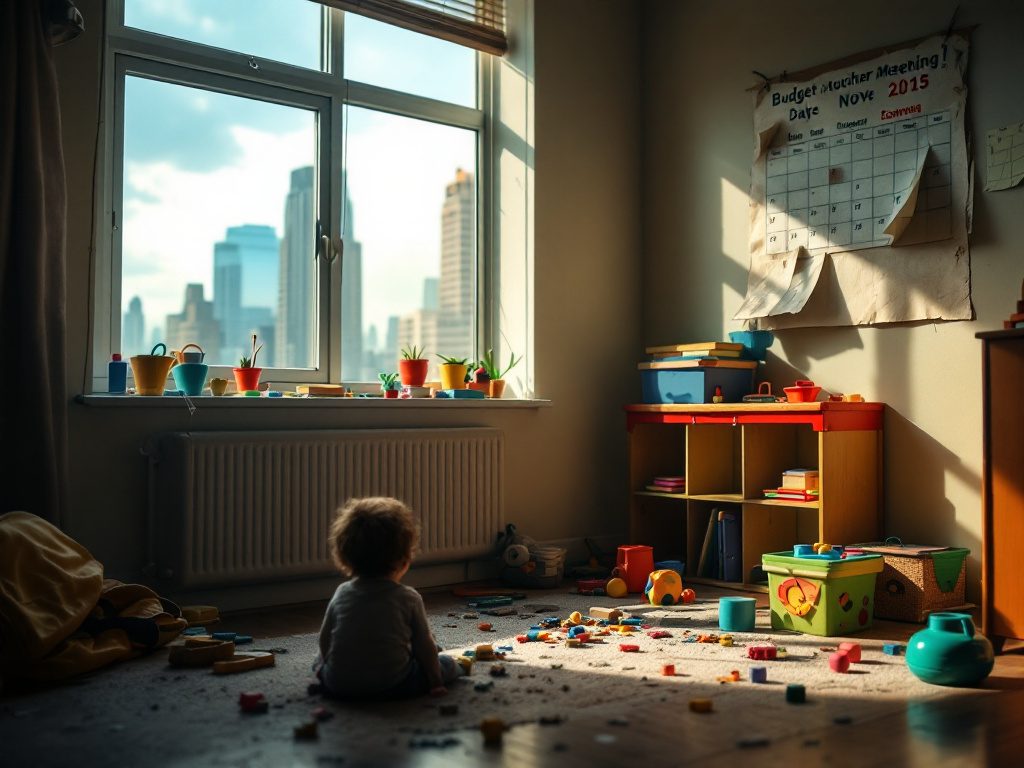Child Care in Turmoil: A Crisis Burdens NYC’s Families
Walk past any public playground in the Bronx or Brownsville and you’ll see the lifeblood of New York City: working parents hurrying between shifts, toddlers clutching their hands, the promise of a future shaped by opportunity. That fragile future, for tens of thousands of these families, now hangs in the balance. Enrollment in the city’s critical Child Care Assistance Program slammed shut this week, leaving new applicants stranded on a growing waitlist thanks to a budget deadlock between Mayor Eric Adams and Governor Kathy Hochul. It is more than a bureaucratic squabble—this is a fight over which level of government will fund the care that undergirds the city’s working class.
Since 2022, participation in the voucher program surged by a staggering 750%, largely spurred by pandemic-era expansions and increased eligibility. New York families, battered by inflation and the city’s eye-watering cost of living, depend on these subsidies as a keystone for stable work and child development. According to the city’s Administration for Children’s Services, as many as 4,000 to 7,000 children could lose access every month if a funding solution isn’t reached. For low-income neighborhoods like the Bronx, where the child care cost burden is highest in the city, the impact would be devastating—and deeply unequal.
Current voucher recipients will keep their benefits if they recertify, but applications from new families now land in a purgatorial waitlist. Families receiving cash public assistance are spared for the moment, but for the rest—especially those just above the benefit line—the very safety net designed to catch them is fraying at the seams.
The Political Blame Game: Adams, Hochul, and the Anatomy of a Stalemate
Why, in an era of mounting child care need, has support dried up? In Albany, Governor Hochul’s office secured an extra $350 million in the massive $254 billion state budget for city vouchers—but only if City Hall meets the state dollar for dollar. Mayor Adams, still reeling from pandemic-related fiscal challenges and the city’s $115 billion budget pressures, balked at the ask. He pointed to a historical precedent: state support for these programs has long been the norm, and the city’s own contribution remains virtually unchanged despite the ballooning need.
With neither side willing to break, thousands of working families pay the price. “It feels like we’re bargaining over our children’s futures, and the adults in the room aren’t listening,” said Maria Ortega, a Bronx mother now facing impossible choices as she awaits voucher approval. Her sentiment is echoed in advocacy circles and echoed sharply by policy experts. Closer examination reveals a system already creaking under weight: state-mandated increases to provider reimbursement rates—intended to improve quality and supply—have driven program costs up 20% in just a few years, dwarfing budgeted funds. Yet the rhetoric from both the mayor and governor often misses the reality: affordable child care isn’t a luxury, but a public good upon which our entire economy depends.
This isn’t just a playground battle—it’s a fight for the survival of working families. When lawmakers fail to uphold their end of the bargain, children pay in unimaginable ways.
The urgency isn’t theoretical. Nearly 60,000 families across New York now fear losing an indispensable lifeline. According to the Center for American Progress, lack of child care amplifies gender inequalities and drags down labor participation rates—especially for women of color. City budgets reflect priorities; what does it say when multiple rounds of negotiations stall over who shoulders the cost of our next generation’s basic needs?
The Stakes: Inequality, Gender, and the True Cost of Austerity
New York’s child care crisis isn’t unique—but it is uniquely American. All too often, conservative approaches that frame child care as a private burden ignore the evidence: strong public investments in early childhood care produce outsized returns for society as a whole. Nobel laureate economist James Heckman found that every dollar spent on high-quality early childhood programs yields up to $7 in long-term benefits, from increased lifetime earnings to better health outcomes.
Beyond that, “waitlists” sound benign, but in practice they translate to lost months of income, parents pushed out of the workforce, children shuffled between unstable arrangements. According to Harvard sociologist Dr. Jessica Calarco, “Policies that ignore the realities of working families reinforce existing inequalities and threaten the very mobility that America promises.” The majority of those most affected in New York are women, especially women of color, who shoulder the greatest caregiving burdens while facing steeper barriers to work and advancement.
Beneath the clash of politicians and spreadsheets, the real casualties are the children whose potential is sacrificed at the altar of balanced budgets. This standoff isn’t just bad policy—it’s a moral failure in a city that prides itself on diversity, resilience, and equal opportunity. Progressive values demand not only that we fund programs for the most vulnerable, but that we do so reliably, without turning basic security into an annual bargaining chip.
What comes next? History shows that communities endure as much as they are willing to demand. The pandemic spotlighted our dependence on working parents and essential jobs; returning to a zero-sum standoff would send the message that working families can be abandoned as soon as headlines fade. The moment calls for vision and courage not only from the mayor and governor, but from the millions of New Yorkers whose futures are, whether they know it or not, deeply intertwined with the fates of the city’s youngest residents.

